8 signs you’re ready for your next big role (and how to act on them)
The career signals most professionals ignore until it’s too late...
There comes a moment in every career where the work stops feeling like growth and starts feeling like routine maintenance.
Trust me when I say this: I have seen this happen to the best of the best, including the ones at Google.
You’ve mastered the role you’re in. You deliver. You even exceed expectations. From the outside, everything appears to be “great”.
But inside? You feel the disconnect.
You find yourself zoning out in meetings. Projects that used to excite you now feel mundane. Even the challenges don’t feel the same anymore as they feel stale & most importantly, “not very productive”.
And yet, you hesitate. Because saying “I’m ready for my next role” feels bold & over-confident. Maybe even reckless.
What if you’re not ready?
What if you leap too soon?
Here’s one thing I have learnt: readiness doesn’t always announce itself with a promotion or a recruiter knocking on your door.
It often shows up as subtle signals in your day-to-day work.
If you ignore those signals, you are likely to take on the risk of stagnating. Instead, if you pay close attention, you’ll realize you’re more prepared for your next big role than you think.
In this edition, I’ll break down the 8 clearest signs you’re ready for the leap — and more importantly, how to act on them.
Common misconceptions about career readiness
When most people think about being “ready” for their next role, they default to the wrong checklist.
“I need more years of experience.”
“I should wait until my boss says I’m ready.”
“I can’t move until I’ve mastered every skill in my current job.”
“If no recruiter is reaching out, I must not be ready.”
Does that sound familiar to you?
These misconceptions keep smart, capable professionals stuck far longer than they should be.
They tie readiness to external validation — titles, tenure, approval — instead of internal growth.
Here’s the irony: by the time you feel that restless itch, you’re usually already operating at the next level.
You’re just not labeling it that way.
The danger of believing these myths? You end up waiting for permission that will never come.
You delay making moves, stay in roles that no longer challenge you, and slowly start questioning your own ambition.
But here’s the good news: readiness isn’t about ticking arbitrary boxes. It’s about recognizing the patterns of growth that are already showing up in your work.
And once you see them clearly, you’ll know it’s time to “stop waiting” and “start acting”.
The real impact of ignoring the signs
Staying in a role after you’ve outgrown it doesn’t feel painful at first.
It feels comfortable. Safe. Predictable.
But over time, the cost starts to show.
Your growth stalls. The challenges stop stretching you, which means your skills plateau while the market moves forward.
Your energy dips. What once felt exciting now feels like going through the motions. You start doing “just enough” to get by.
Your confidence erodes. The longer you wait, the harder it feels to make a change. You wonder if you’re even capable of more.
I’ve seen this play out with brilliant professionals — people who should have been leading teams or shaping strategy — but who stayed stuck because they misread the signals of readiness.
And here’s the hard truth: nobody (including your manager) will tap you on the shoulder and say, “You’ve outgrown this role, it’s time for more.”
If anything, they’ll happily keep you where you are — delivering, dependable, safe.
The longer you wait, the heavier the risk: not that you’ll fail in a new role, but that you’ll fade in the old one.
Here’s the flip side: if you’re noticing the restlessness, the boredom, or the itch for something bigger — that’s not a sign of failure. It’s a sign of growth. I can vividly attest to that feeling I used to experience every 2-3 years throughout my 15-year corporate journey.
It means you’ve mastered what you’re doing today.
It means you’re already operating beyond your current scope.
It means you’re building the muscles that your next role will demand.
Readiness isn’t about perfection. It’s about momentum.
At Google, I watched countless colleagues make big leaps into roles they once thought were out of reach.
Not because they were the “most experienced” or had waited the longest.
But because they paid attention to the signals that told them: You’re ready. Act on it.
That’s what this playbook is designed to give you.
Clarity. Confidence. A framework to recognize those signals in your own career — and take your next step with intention, not hesitation.
So let’s break down the 8 signs.
If even 2 or 3 of these resonate, it may be time to stop waiting and start moving toward your next big role.
Sign #1: You’re bored — even with the hard stuff
Early in your role, even the smallest projects stretched you. You were learning, experimenting, making mistakes, and growing fast. But over time, the challenges that once felt daunting start to feel routine. You can deliver on them with your eyes closed.
That’s not disengagement or laziness — it’s a signal you’ve leveled up. The danger is mistaking this boredom for burnout and trying to “push through.” In reality, it’s your career telling you it’s time to seek out bigger, more complex problems — the kind that scare you just enough to make you grow again.
Sign #2: You’re solving problems beyond your scope
At some point, your day-to-day job stops being the full picture of your contribution. You notice yourself taking on challenges that technically belong to someone else’s plate — a cross-functional issue, a gap in process, a problem nobody asked you to solve but you couldn’t ignore.
That’s not overstepping. It’s evidence you’ve already leveled up. If you’re consistently operating above your role, it’s a sign the title on your résumé is lagging behind your actual skills. Time to make it official.
Sign #3: People come to you for guidance
You don’t need a formal title to be seen as a leader. If teammates are turning to you for advice, clarity, or direction, it means they already see you that way. Leadership shows up long before it’s printed on an org chart. When others trust you to guide them, you’re ready for the next step.
Sign #4: You’re more focused on strategy than tasks
Tasks used to energize you. Checking things off gave you momentum. But now you’re less interested in what to do and more drawn to why it matters. You’re asking bigger questions, connecting dots across teams, and thinking about outcomes over activity. That shift from execution to strategy is a clear signal you’ve outgrown your current role.
Sign #5: You’re mentoring without being asked
Somewhere along the way, you started teaching. You help new hires ramp faster. You share frameworks with peers. You step in to lift others — not because it’s required, but because it feels natural. Mentorship is one of the clearest signs of leadership readiness. If you’re already doing it informally, you’re ready to own it officially.
Sign #6: You crave impact, not just motion
Busyness no longer satisfies you. Checking boxes, finishing tasks, and even hitting goals feel empty unless they drive meaningful results. You’re chasing impact, moving needles, not just moving fast. That hunger for significance is exactly what higher roles demand.
Sign #7: You spot gaps—and want to fill them
You’re not waiting for permission to improve things. You notice inefficiencies, blind spots, or opportunities — and you take initiative to close them. That instinct to build, fix, or improve shows you’re thinking like an owner, not an employee. It’s one of the strongest signals you’re ready for a bigger scope.
Sign #8: Staying still feels worse than taking a risk
The discomfort of stagnation outweighs the fear of change. The thought of staying where you are feels heavier than the risk of stepping into the unknown. That restlessness isn’t fear — it’s growth knocking. When standing still becomes unbearable, it’s time to move.
Most people wait for someone else to validate them. A boss to promote them. A recruiter to call. A mentor to say, “You’re ready.”
But that’s not how growth works. By the time you start noticing these signs, you’ve already outgrown your current role. The only question is whether you’ll act on it.
Titles don’t define readiness. Energy, ownership, and ambition do.
So if even two or three of these signals resonated with you, don’t brush them aside. Use them as fuel to start the conversations, explore the roles, and take the steps that will move you forward.
Because staying comfortable might feel safe in the short term.
But in the long run, comfort costs more than risk ever will.
-Raghav.B
P.S: What’s stopping you from getting that next promotion? Let me know.
Quick Reminder:
I’m piloting a new 8-week 1:1 coaching program to help early/mid-career professionals break through plateaus and create a clear, intentional career path.
I’m taking only 3 clients this round since I'm still working FT. This will be at a special founder’s rate of $2,000 (regular $3,500+).
We will start on Sunday, Sept 7.
Please DM me to let me know if you are interested, and I’ll send you details + a link to book a free 30-min fit call.
Cheers,
Raghav



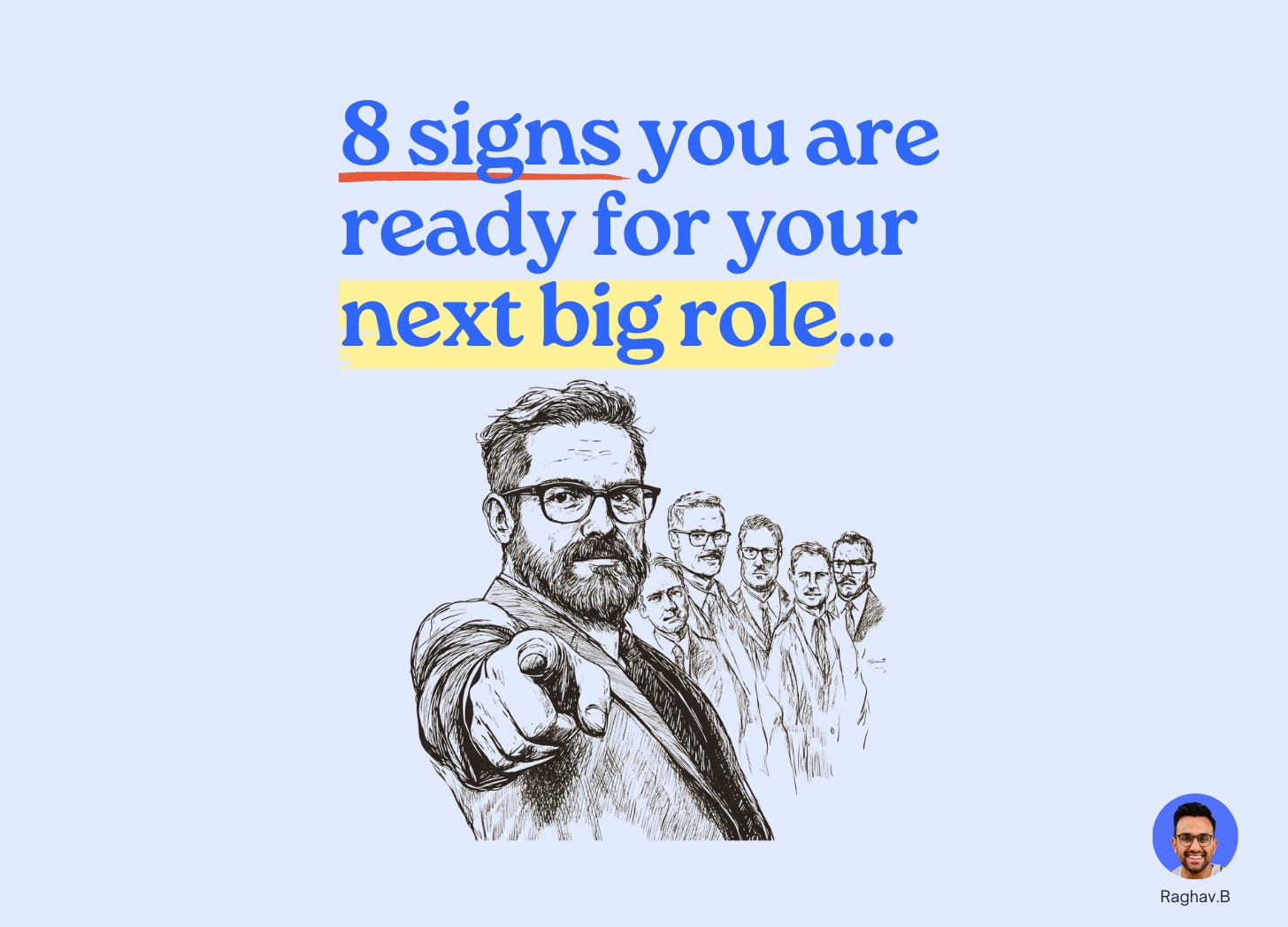

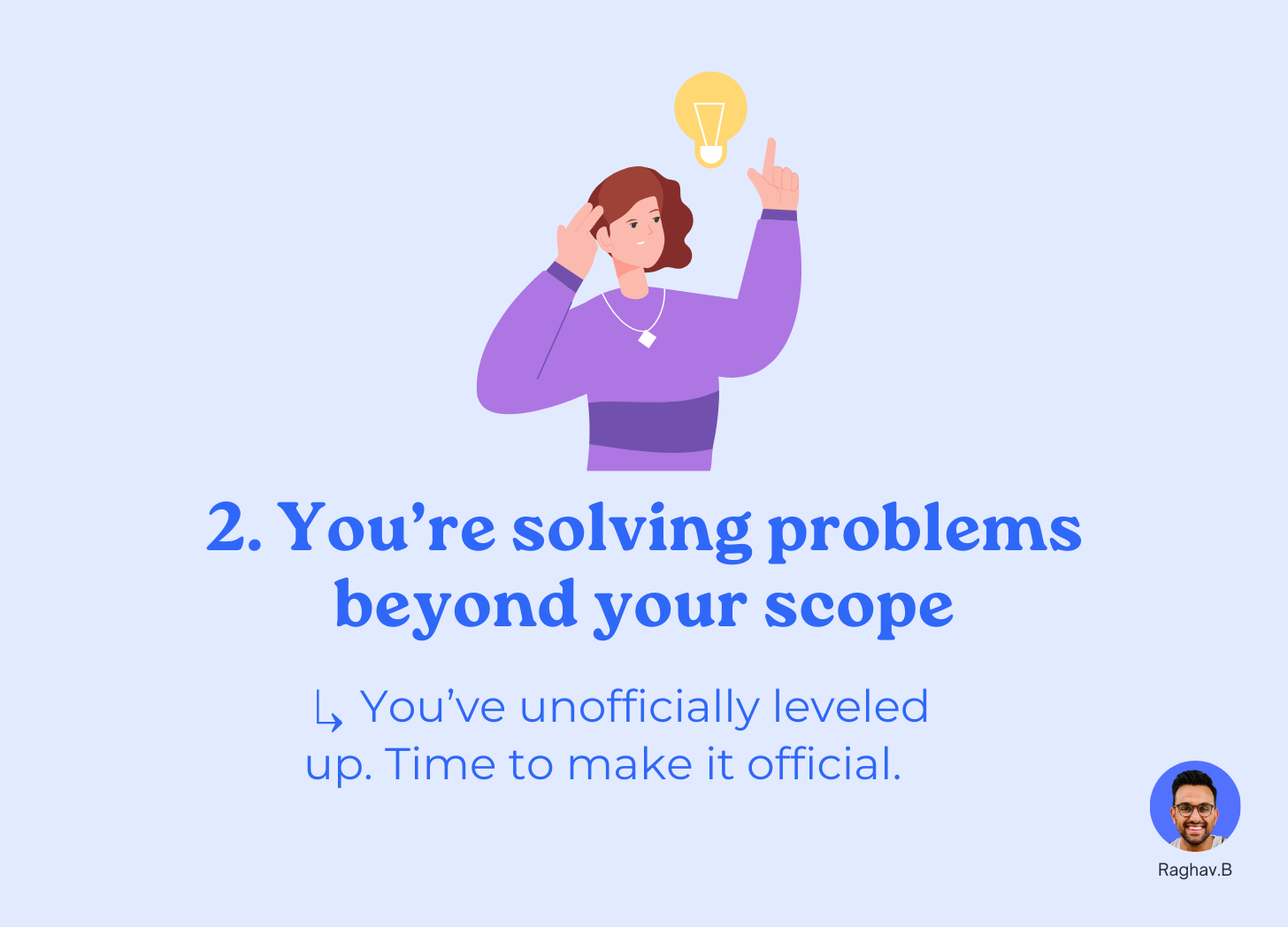

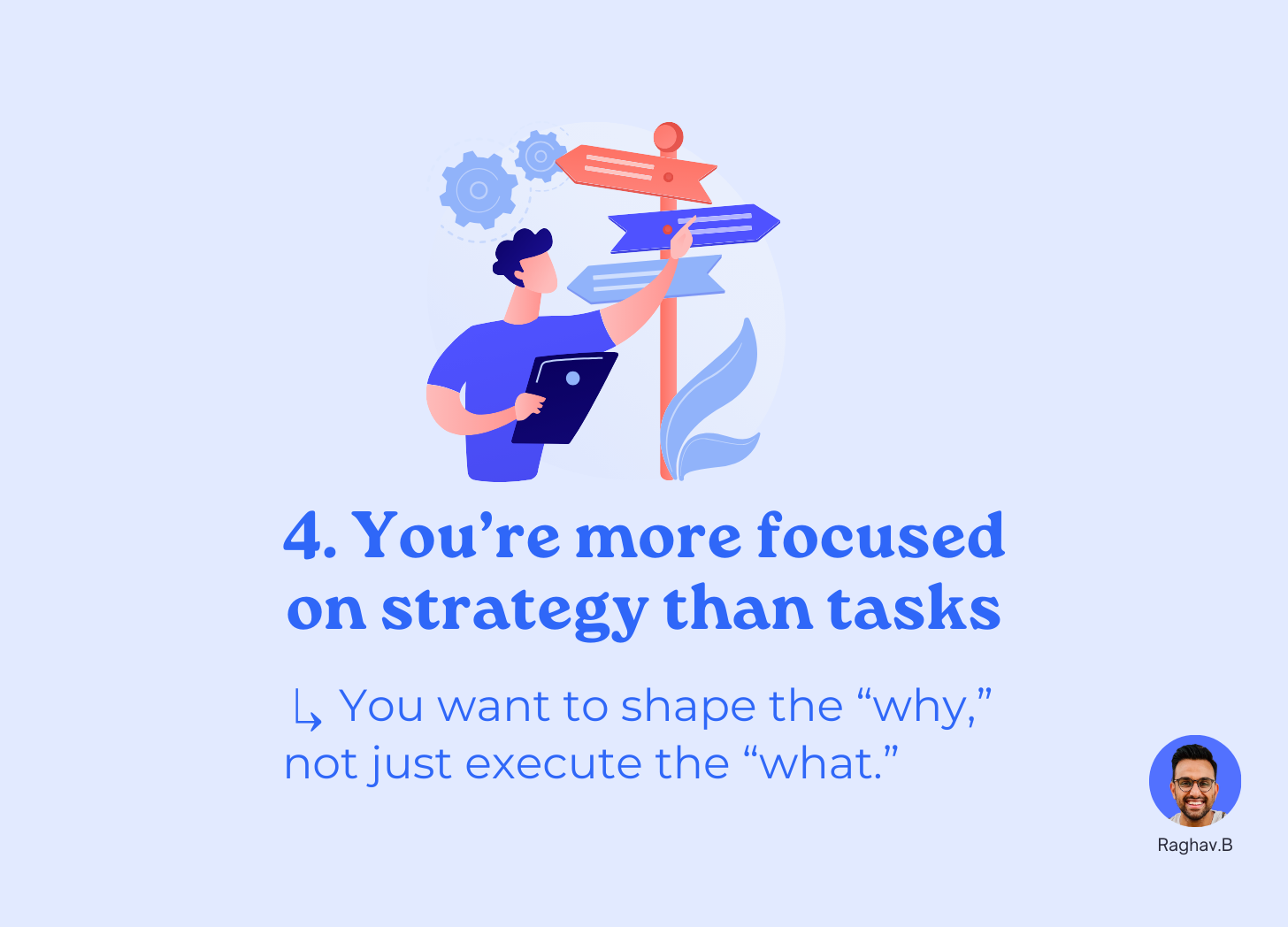
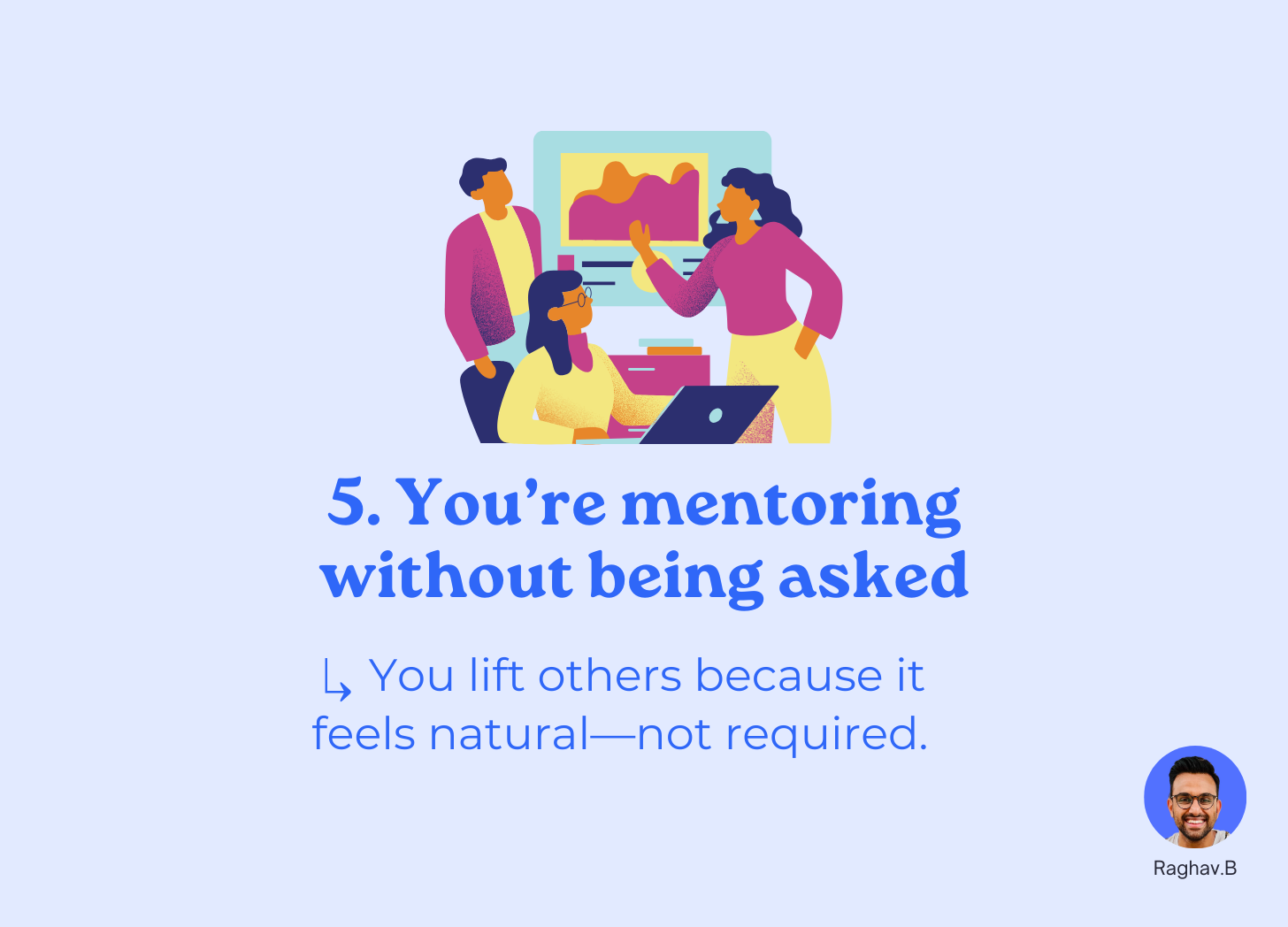

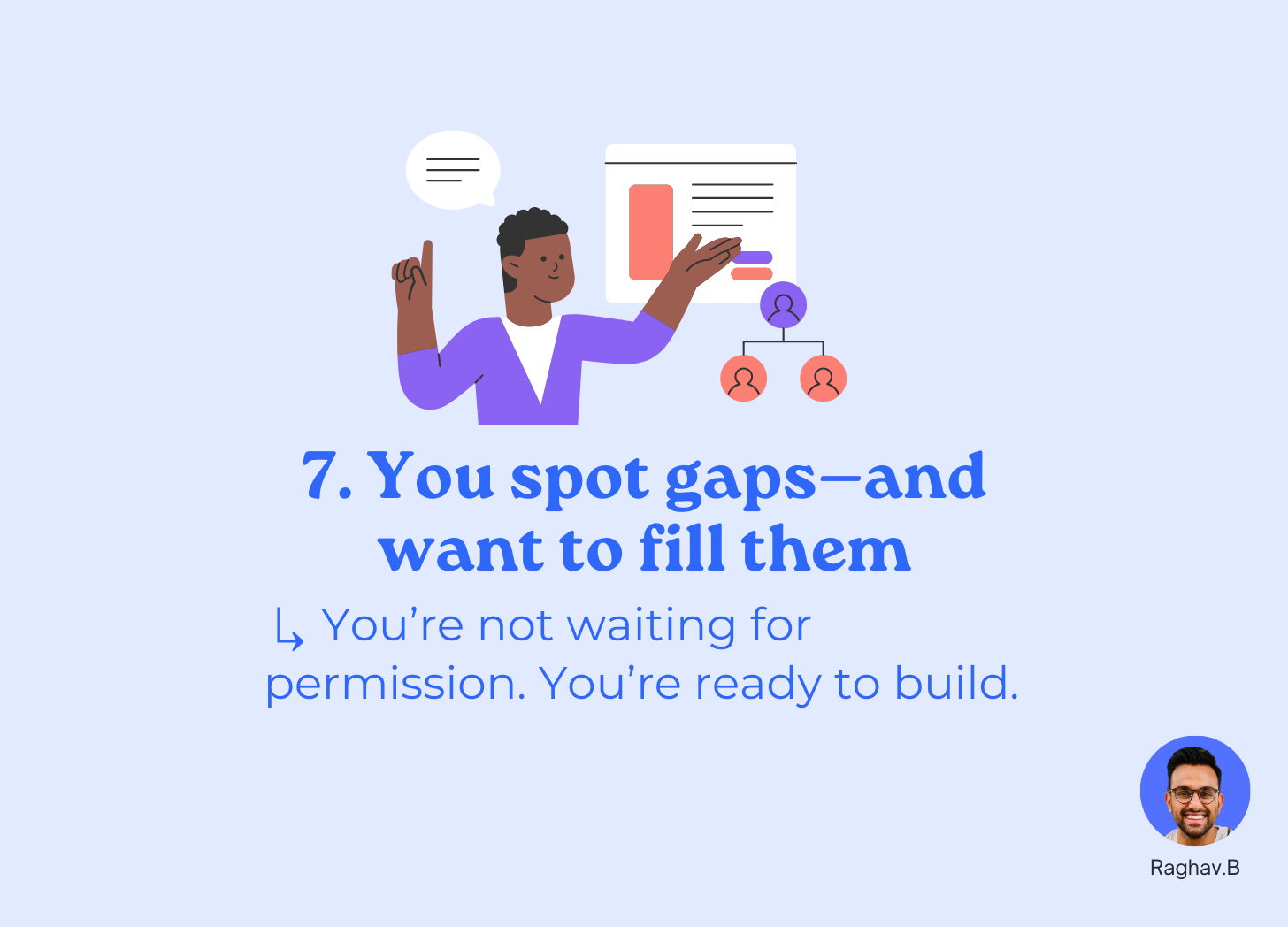
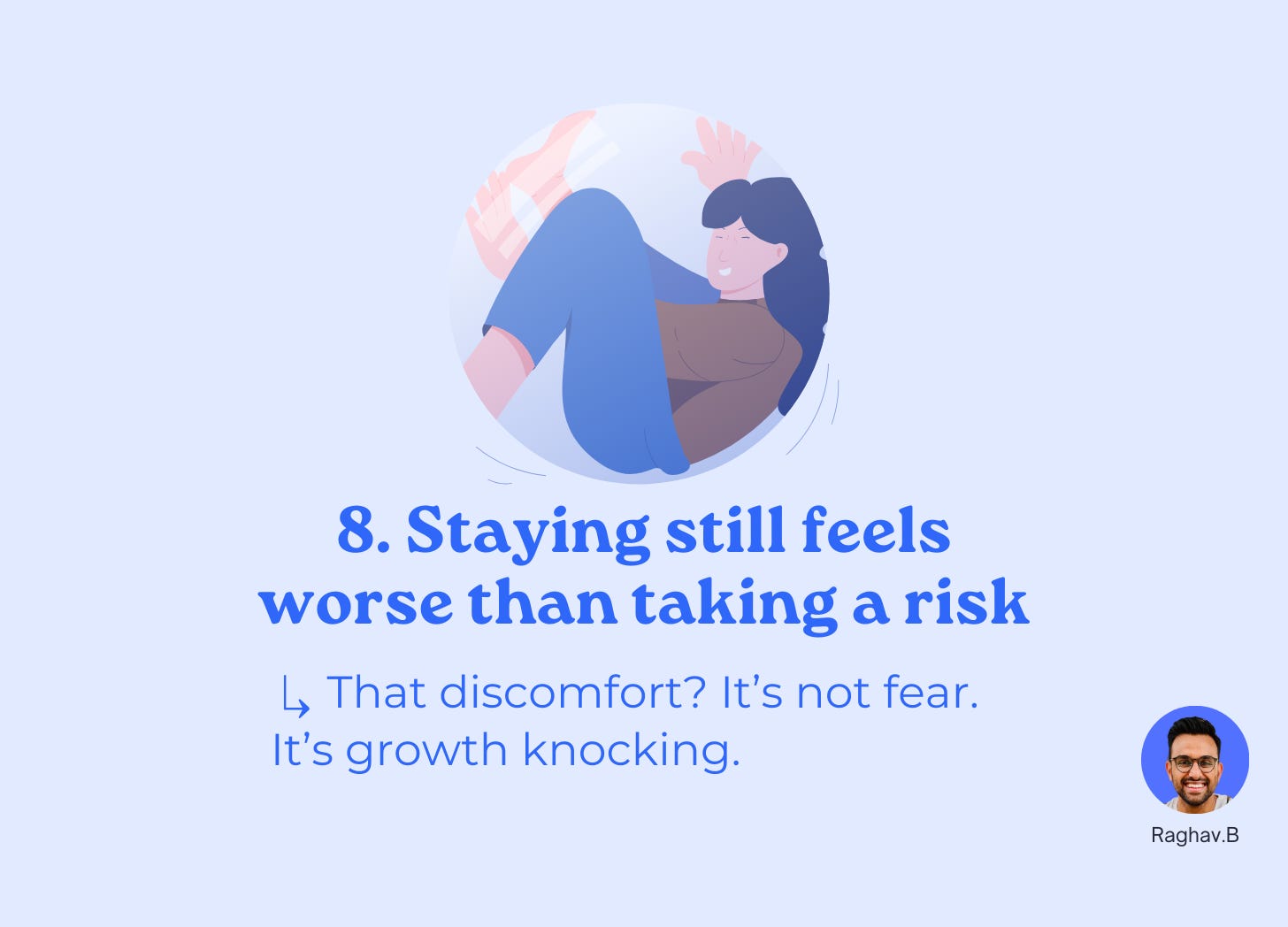
Damn, this resonated!
I just accepted a new role and will start in October, but ALL these signs have been abundantly present for at least 6 months.
The hardest thing for me?
Fearing to be labeled as “arrogant” or a “ladder climber”.
The problem is that growth builds upon the finite role in which you are and so, paradoxically, the faster you grow and the more you are valued but the faster you “fill” the role, and so, if you work ON your job and not simply IN it, you end up going through the cycle much faster than “normal”.
Brilliant! I am HERE! #2-#7. This is super affirming and supportive. Thank you so much! I've also outlined how I could transition not just into a new role but also transition my current role while doing so to lessen resource strain on my current team. My Substack journey helped me figure this out.